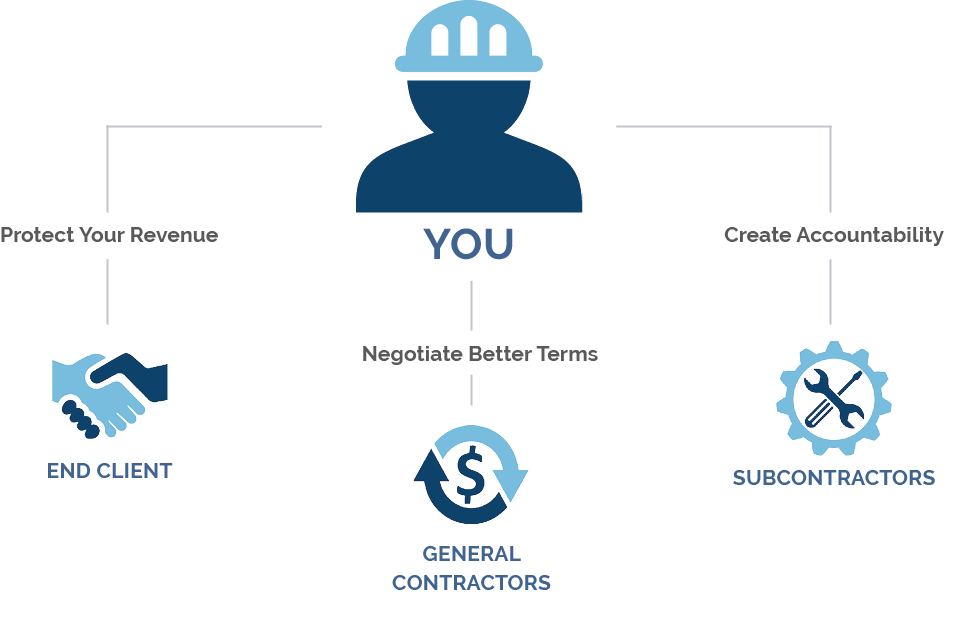.png?height=200&name=Blog%20Image%20(8).png)
Contracts & Legal
Understand Your Contractual Responsibilities
Every business uses contracts in some form or another. It’s generally how you agree to services being provided, the expectations of those services and who’s liable for those services meeting expectations.
Contracts are also how you shift risk from one entity to another. Take, for example, a contractor who is building a home. They may subcontract out some of the work, yet they don’t want to be liable if that works is unsatisfactory or doesn’t meet building codes. The contract language would need to indicate that.
Do you have standard contract language that has been reviewed by an attorney? Do you fully understand the contracts you’ve signed – with insurance carriers, clients or otherwise? Are you bringing in legal assistance when you see red flags in agreements put in front of you?
Why Consider Contract and Legal Assistance?


Protect Your Revenue
With solid contracts in place, your clients will have a better understanding of what you’re responsible for and what you can be held accountable for, so if any issues arise, your work is protected by the contract.

Negotiate Better Terms
Before you take on work as a subcontractor, it’s your responsibility to fully read the contract and understand what aspects of the job you are responsible for. Your contract and legal risk advisory team can help you negotiate better terms.

Create Accountability
As a business owner, you take pride in your work, and you want to work with subcontractors who share in that pride. Rather than hope a project turns out well, get the accountability in writing via contracts.

Protect Your Purpose
Guidebook
See if Ellerbrock-Norris is a fit for your business with our 60-plus page guidebook on how we help you Protect Your Purpose.
Risk Management Scenario
You own a pool installation company that works with residential clients. Your company installs the pools and pours concrete, but you generally subcontract out any deck building or woodworking required.
You install a pool that has a deck leading up to the edge of the concrete on one side of pool. However, after the project, the client calls to complain that the composite decking material is cracked in three places and the screws used to hold the material in place are protruding from the ground, causing people to cut their feet when walking on the deck.
The contract language will dictate who is responsible for replacing or fixing the deck – and who is liable if a lawsuit were to emerge from the injuries caused by the deck.
Risk Management Scenario
You own a pool installation company that works with residential clients. Your company installs the pools and pours concrete, but you generally subcontract out any deck building or woodworking required.
You install a pool that has a deck leading up to the edge of the concrete on one side of pool. However, after the project, the client calls to complain that the composite decking material is cracked in three places and the screws used to hold the material in place are protruding from the ground, causing people to cut their feet when walking on the deck.
The contract language will dictate who is responsible for replacing or fixing the deck – and who is liable if a lawsuit were to emerge from the injuries caused by the deck.
Get Started Today
Whether you're looking for business insurance, group benefits or business exit planning, we're here to help. Simply fill out the form below and we'll reach out to get process started.


